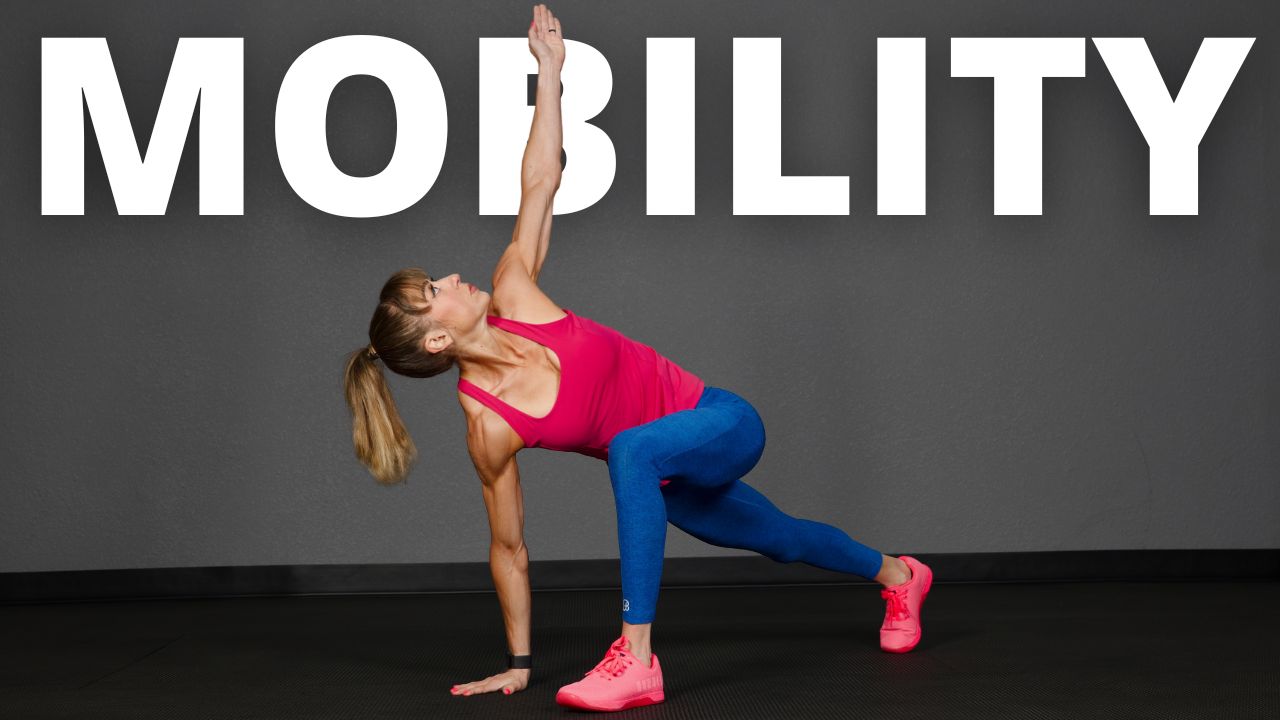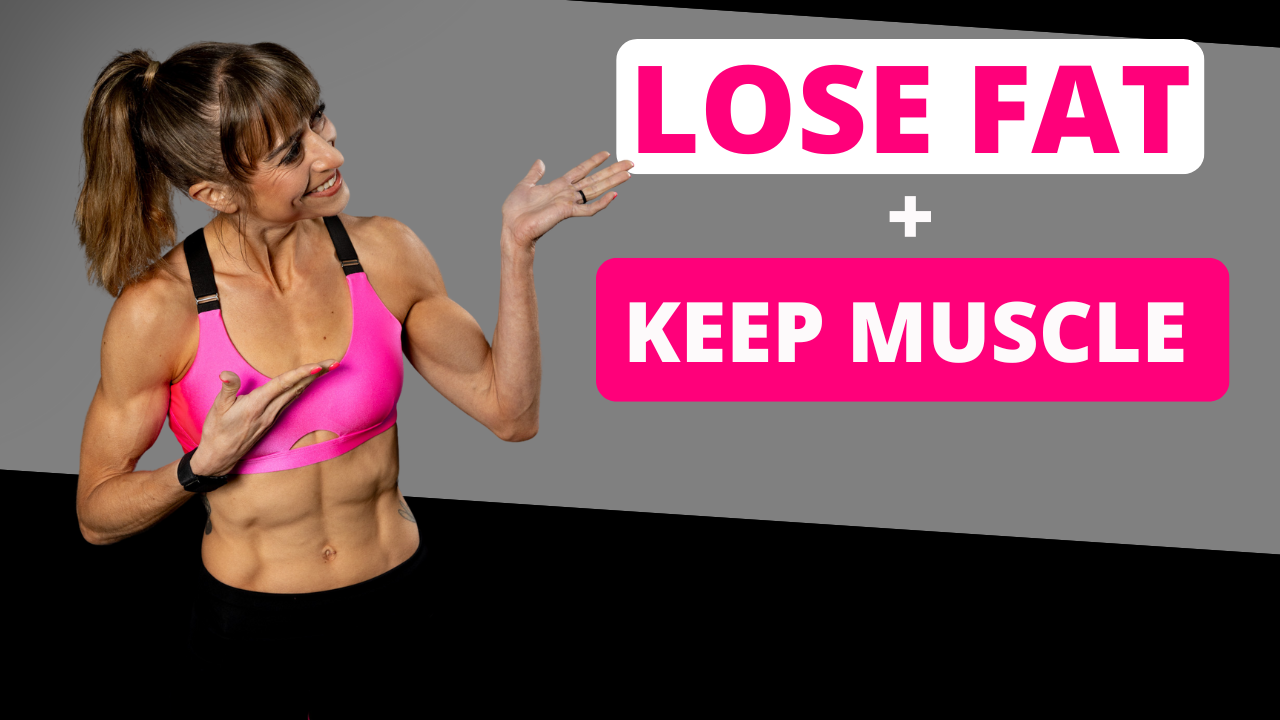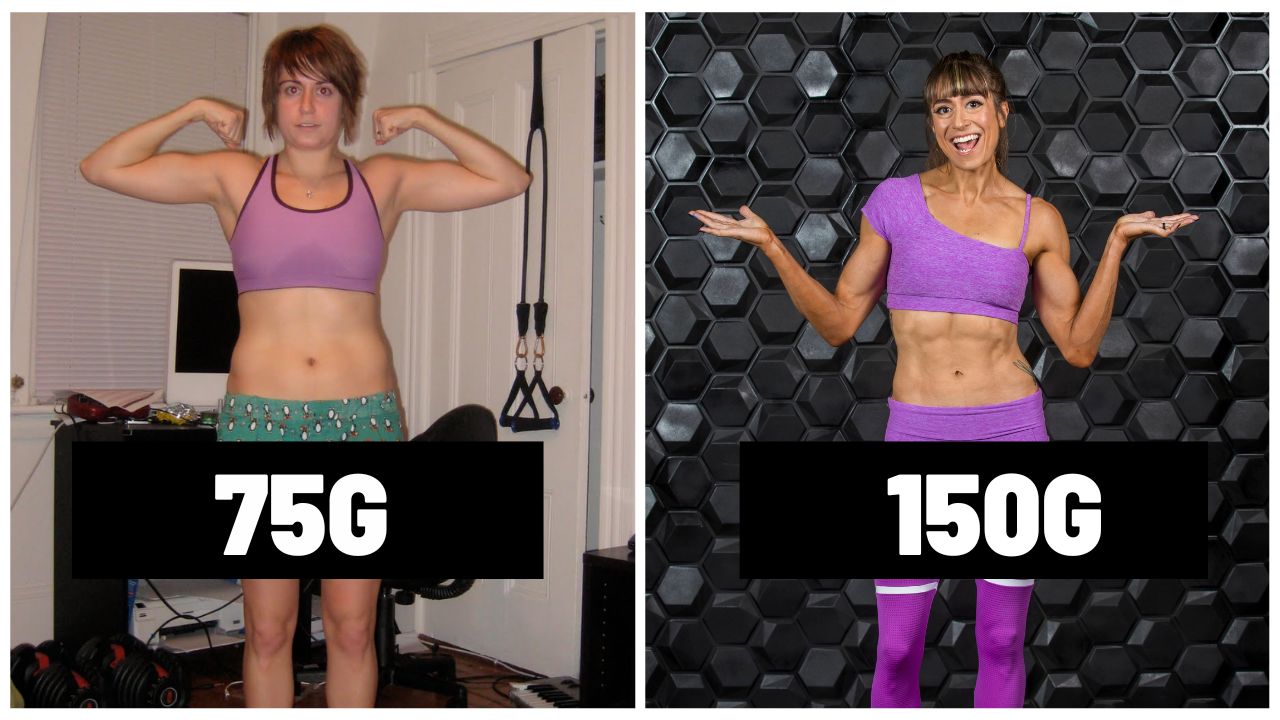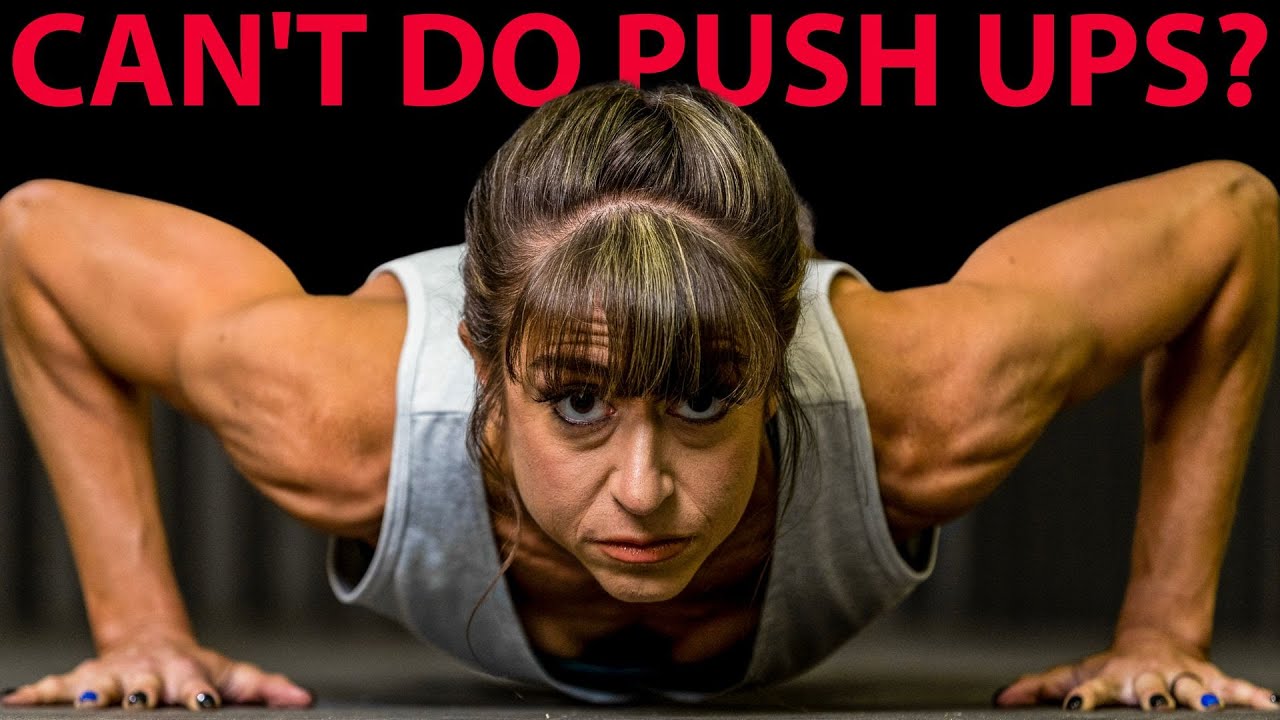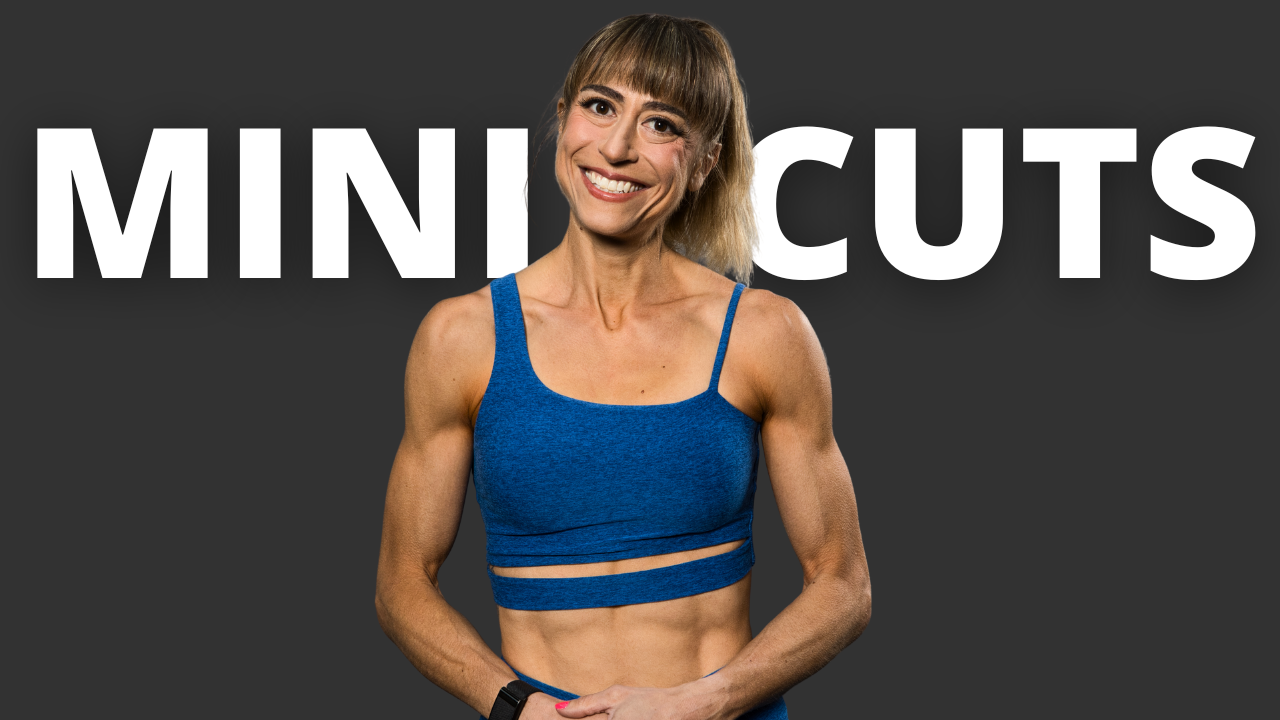
MINI CUTS – The Smartest Way To Lose Fat Quickly
Want to look leaner and always feel fabulous for that big event or vacation?
Well I’m going to share how you can actually accomplish this and stay leaner all year around.
And it’s not a cleanse or detox. It’s not a magic pill…
The secret is MINI CUTS.
In this video I’m going to explain what mini cuts are, why and when to use them and how to design your own.
Because they are the perfect way to kickstart your fat loss progress when you’ve hit a plateau or even when you want your muscle definition extra on point to feel your most fabulous.
Now a word of warning…

Mini cuts are NOT sustainable.
They’re not easy or fun.
They’re not the time you include the foods you love or strike a lifestyle balance.
They’re intensive and restrictive with a purpose.
You’re going to feel hungry. You’re going to feel a bit fatigued.
They aren’t meant to be done long term but as that quick fat loss phase that really pushes you to that next level of body recomp.
And they’re done for 1-2 weeks, 3-4 max.
While they can be amazing for that fast progress, doing them longer than a month will sabotage your success and backfire.
Their magic is in their short duration.
But if you need to see that quick progress on the scale for motivation…
Want to strike a balance around vacation and even to feel extra fabulous in your swim suit…
Or want to lose a bit of fluff you’ve put on after focusing on a muscle building phase for a bit…
Mini cuts are the perfect way to strike a balance.
And before I go into how to do one I want to touch on WHEN to use them.
I do NOT recommend using a mini cut if you’ve already been in a calorie deficit especially for an extended period of time.
Slashing your calories lower when you’ve already been in a deficit can lead to metabolic adaptations.
If you’ve been in a calorie deficit for a few months, consider a diet break BEFORE using a mini cut.
This is also why mini cuts can be great even after a vacation when you may have been eating more at maintenance and with more relaxed macros.
This is also why mini cuts are great during a maintenance or muscle building phase for that little extra shred to stay leaner overall.
But ideally you are using a mini cut after eating at maintenance at least for 1-2 weeks.
And you will even want to build BACK to maintenance after a mini cut for a couple of weeks before returning to your regular calorie deficit.
Now how do you determine what calories and macros to use for a mini cut?
You are going to use an “extreme” deficit and intensive, high protein macro ratios for 7-14 days ideally, but you can use them 21-30 days max. Just note that longer isn’t always better.
For this short timeframe, you want to push your calorie deficit without going past the point of diminishing returns.
That means you want to consider cutting 300-500 off your maintenance calorie level.
If you aren’t fully sure where maintenance is for you and you have more weight to lose, multiply your goal bodyweight by 10.
If you are leaner already and extremely active, this may be more like 11-12 x current bodyweight.
You will then want to cycle macros every week, using 2 ratios over your 2 weeks.
While these ratios may vary slightly based on your activity level and needs, you want to use ratios that are about 45-50% protein.
Two common ones I use are:
45% protein, 25% carbs, 30% fat
50% protein, 30% carbs, 20% fat
This keeps protein extremely high but helps avoid any hormonal issues during this quick sprint by cycling fat and carbs slightly up and down.
These ratios are extreme. It’s part of why you are NOT using this long term.
Carbs and fat are not evil but for fast body recomp, keeping protein this high while pushing the calorie deficit works magic.
Preserve lean muscle as you lose fat.
It’s a huge win but NOT a fun diet to do.
So pick one ratio after setting your calories to start with and use that for 7 days. Then switch to the other for the second week.
You may notice a huge drop not until the end of the mini cut or even once you actually finish it and start bumping calories back up.
To return to higher calories, add 100 calories to your daily total and increase each week as you cycle your protein down to 30-40%.
Now a few more tips to make this work so you go in 100% prepared for the challenges and see the results you want from this quick fat loss protocol…
#1: You have to be precise.
You can’t allow for 1% deviations. You can’t excuse fluctuations day to day.
You want to be within 5 grams of your macro numbers DAILY and no more than 50 calories plus or minus.
This precision is key.
It may be a good time to really meal prep, keep prep simple and NOT plan in meals out.
Precision really is key.
Again, this is NOT a time to focus on sustainability or balance. It is a time to go all in so you can then go back to more of a fat loss lifestyle balance after or even return to maintenance.
#2: Plan ahead.
These ratios aren’t easy. Precision is key. And you’re going to be hungry.
So you need to plan ahead to help yourself navigate the challenges.
Plan more carbs around your workouts and even if you usually train fasted, consider a small snack prior so you aren’t starving after.
This also helps you protect your lean muscle during this quick protocol.
But plan ahead to make sure you’re getting a balance and not getting to the point of being so hungry you cave and overeat.
#3: Be boring and focus on high volume meals.
While you may love diversity in your meals, now is probably not the time to make meal prep more complicated. It only makes things more challenging.
And studies have even shown that reducing food diversity during a fat loss phase can help cut back on cravings.
You don’t necessarily want more of the boring foods you have to eat. While adding in more diversity can make you want more of…well different things.
So consider simplifying meal prep and really focus on those low calorie foods that fill your plate and make you feel fuller.
Lots of veggies, low carb fruits like berries, lean proteins and such are key. The more bites you get, the more you’ll find you stay satisfied while in this intensive deficit!
#4: Don’t do this if you aren’t ready to track macros meticulously.
If you’re not a macros math person already, don’t force yourself to start with one of the hardest macro protocols out there.
This mini cut works best if you are super comfortable adjusting and hitting macros meticulously and not going to be frustrated figuring out what fits.
These ratios are HARD. They don’t allow for a ton of fun foods or flexibility.
And precision is key.
So if you aren’t an advanced macro tracker, this may not be the place you start.
Don’t set yourself up for failure trying to force something not realistic for your lifestyle…yet.
If you’re looking to take your results to that next level, or simply want to feel extra fabulous for a big event, consider implementing this advanced macros technique.
It’s a great way to strike balance over your year especially around times you may be more lax to avoid falling back into the yo-yo dieting cycle!
Not everything we do is meant to be a lifestyle but through adjusting as we go we can overall create an amazing balance!
Want a plan to help you rock a 14-Day Mini Cut? Check out this amazing special on my Mini Cut Challenge!
–> LEARN MORE

